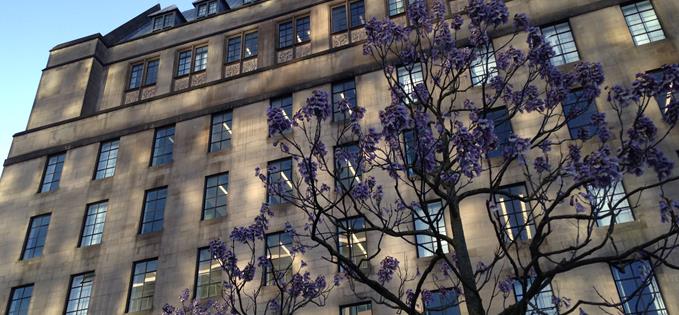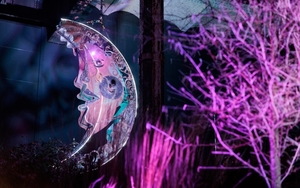THE NEW trees in St Peter’s Square are causing a bit of horticultural interest around the city centre. This links nicely with the Lost Gardens of Manchester installation at Manchester Art Gallery just around the corner - a collaboration between the National Trust and Manchester Art Gallery. Yes, there really were gardens in the city centre. Mulberry Street had a mulberry tree, hence the name, and the delicious Mr Cooper’s House and Garden at the Midland really did have a garden, right there.
I no longer accept any excuses about difficult plant names. If Metasequoia glyptostroboides were a new signing for City his name would quickly become an amusing chant
But it's not all about the past. Manchester city centre provides a full arborteum of leafy delight. I'll be talking about this on Thursday at Manchester Art Gallery, but let's start with the strange new trees in St Peter's Square, what are they?
They’re Paulownias (Paulownia tormentosa is the full botanical name) and they’re Chinese trees. Fast growing, early flowering trees also known as the Princess tree or Empress Tree. The Old Chinese custom was to plant a Paulownia when a Princess was born and, being fast-growing, they would mature and bloom at the same time. Even for radical Manchester it was a pleasant coincidence to have our new trees flowering as the new female entered the Royal household. The trees are also sweetly placed between Chinatown and Central Library with its excellent Chinese collection.
It’s not the only Chinese tree we have either. There are some magnificent Chinese conifers on Oxford Road by the Aquatic Centre. Right there by the bus stop are Dawn Redwoods, beautiful elegant deciduous conifers that look as if the Great Gardener in the Sky has reached down with finger and thumb and drawn up a twirl of green.
Granted, these trees do have a pretty challenging horticultural name, Metasequoia glyptostroboides, but I no longer accept any excuses about difficult plant names. If Metasequoia glyptostroboides were a new signing for Manchester City his name would be anglicised and quickly become part of a clever and amusing chant.
 'There's only one Metasequoia glyptostroboides, one Metasequoia glyptostroboides, one...'
'There's only one Metasequoia glyptostroboides, one Metasequoia glyptostroboides, one...' The Dawn Redwood was completely unknown to man until 1941 when scientists found some fossils in China. “Brilliant”, they said, “we’ll call them Dawn Redwoods because they’re redwoods, we can see that from the fossils, and they’re dead old, we can see that from the fossils too, at least 200 million years, from the dawn of time. They must’ve been great trees once”.
And then what happened?
They found some real living Dawn Redwoods, not just fossils, in a remote province of China. Now, this is the plant equivalent of finding real live dinosaurs, these are living fossils. The dinosaurs rubbed up against these trees in romantic olden days of yore and now our lovely students pin notices to them. The horticulturalists took cuttings, the cuttings took and now these magnificent trees are being ignored up and down the country.
Trees don’t worry about origins, as long as the conditions are suitable they will grow.
They are often ignored by busy Mancs who pay attention to artworks and architecture but not so much to arboriculture. Except for when the trees flower that is. We like flowers, perhaps that’s why we are so sympathetic with bees, especially here. So, Paulownias, welcome to Manchester, long may you bloom.
Want to know more about Manc-type plants? Come to my talk on The History of Manchester in Ten Plants at the Manchester Art Gallery on Thursday 4 June at 6.30pm.
 Amidst the trees in St John's Gardens
Amidst the trees in St John's Gardens








 'We love Paulownia tormentosa, we do, we love Paulownia tormentosa, we do...'
'We love Paulownia tormentosa, we do, we love Paulownia tormentosa, we do...' 






